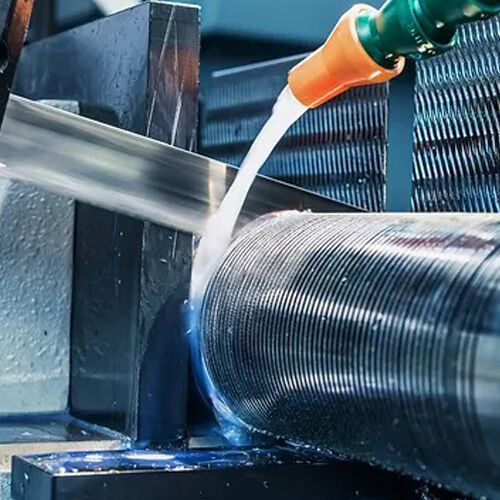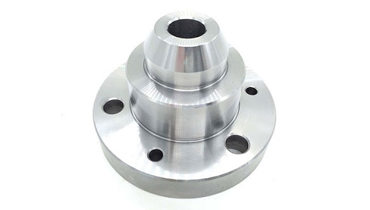This website uses cookies so that we can provide you with the best user experience possible. Cookie information is stored in your browser and performs functions such as recognising you when you return to our website and helping our team to understand which sections of the website you find most interesting and useful.
- Home
- Materials
- CNC Machining Metal
- Aluminum
- Aluminum 6063
Aluminum 6063

Material Type
Metal
Material Name
Aluminum 6063
Alternative Names
Alloy 63S | EN AW-6063 | 62400| AlMg0,7Si | A96063 | H9
Process Compatibility
CNC Milling, CNC Turning
introduction
Aluminum 6063 in CNC Machining

Aluminum 6063 is mainly composed of aluminum, magnesium, and silicon. Its excellent machinability makes it good for cutting, drilling, and shaping in CNC processes.
Typically used in its as-extruded state, it undergoes extrusion to create various profiles and structural components. The alloy is known for its anodization capability, enhancing corrosion resistance, and providing decorative finishes. It's resistant to corrosion, particularly in outdoor settings. It can be welded using TIG (tungsten inert gas) or MIG (metal inert gas) methods but post-weld heat treatment may be needed for specific applications. CNC machining allows for tight tolerances and precision with Aluminum 6063 to produce intricate parts. The tooling and cutting speeds must be chosen carefully to prevent wear and ensure optimal surface finishes. Adequate cooling and lubrication during machining help manage heat and facilitate chip evacuation.
The composition of aluminum alloy 6063 is defined by specified ranges for various elements, presented as a percentage by weight. The alloy consists primarily of aluminum (Al) with a minimum content of 97.5% and a maximum of 99.35%. Other key constituents include magnesium (Mg) ranging from 0.45% to 0.90%, silicon (Si) from 0.20% to 0.60%, and iron (Fe) from 0% to 0.35%. Additionally, chromium (Cr), copper (Cu), manganese (Mn), titanium (Ti), and zinc (Zn) are present in minimal amounts, each ranging from 0% to 0.10%. The cumulative content of other miscellaneous elements is limited to 0.15% in total, with individual elements not exceeding 0.05%.
Properties
Properties Table of Aluminum 6063
| MECHANICAL PROPERTIES | |
|---|---|
| Ultimate Tensile Strength | 110-210 MPa |
| Yield Strength | 55-130 MPa |
| Young's Modulus(Elasticity) | 68-69 GPa |
| Elongation at Break | 8-18 % |
| Physical Properties | |
| Corrosion Resistance | High |
| Magnetism | Non-magnetic |
| Weldability | Good |
| Thermal Properties | |
| Maximum Service Temperature | Approximately 200°C (392°F) |
| Thermal Expansion Coefficient | 23-25.6 x 10^﹣6/°C |
| Thermal Conductivity | 190-220W/(m·°C) |
| Electrical Properties | |
| Electrical Resistivity | 3.32 μΩ*cm |
| ESD Safety | Good conductivity, used in ESD-sensitive enviroments |
TECHNOLOGY OVERVIEW
Basic Knowledge of Aluminum 6063
What is Aluminum 6063?
Aluminum 6063 is a versatile alloy known for its strength, corrosion resistance, and formability. Belonging to the 6000 series of aluminum alloys, it's widely used in construction and architecture. The alloy's standout feature is its high extrudability, allowing for easy shaping during manufacturing. These are why Aluminum 6063 is also called an architectural alloy or extrusion alloy.
Its corrosion resistance is important for outdoor applications. While not as heat-treatable as some other alloys, Aluminum 6063 can undergo processes like solution heat treatment and artificial aging to enhance its mechanical properties. Its weldability adds to its fabrication ease. Aluminum 6063 is adaptable to different manufacturing processes.
Advantages of Aluminum 6063
- Excellent machinability
- High formability and extrudability
- Good corrosion resistance
- Lightweight nature
- Excellent weldability
- Good thermal conductivity
- Recyclability
- Cost-effective
Applications of Aluminum 6063
- Architectural framing systems such as window and door frames, curtain walls
- Extruded shapes and profiles
- Automotive components like body and frame sections, trim pieces
- Industrial and commercial ladders, scaffolding
- Electrical enclosures, heat sinks
- Lighting fixtures, lamp housings, frames
- Solar panel frames
FAQ
Machining Aluminum 6063 Buying FAQ
Other Materials

Aluminum 7075
Aluminum 7075 is a strong and lightweight alloy often chosen because of its high strength-to-weight ratio. It is widely used in CNC machining

Aluminum 6082
Aluminum 6082 is known for being highly resistant to corrosion and possessing exceptional strength.It is a popular choice for applications under stress.

Aluminum 6061
Aluminum 6061 (CNC) is the most popular aluminum alloy. It has good strength-to-weight ratio, excellent machinability and natural corrosion resistance.
Get An Accurate Quote For Your Next Projects
No matter your project is complicated or simple, no matter is metal or plastic, you will get an accurate quotation within 6 hours.
Get A Quote Today